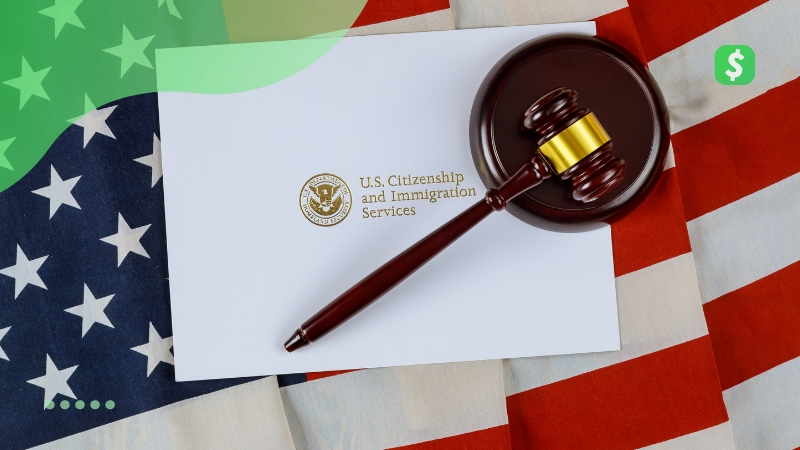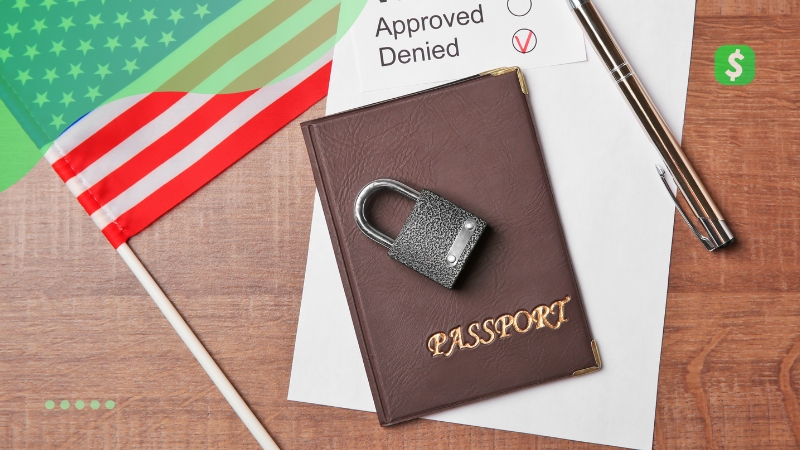Advertisements
Changes in U.S. immigration policy continue to impact millions of immigrants across the country. The most recent US immigration policy updates reveal an intense movement between judicial decisions, executive measures and social pressures.
The Supreme Court’s rulings strengthen the federal government’s authority and new restrictions are being considered. Issues such as citizenship by birth, deportations to third countries and the legality of policies are at the center of debates that affect the lives of immigrants and employers.
In this article, you’ll see the top US immigration policy updates of the week. Thus, you will be able to understand everything about what is changing in the United States. All in 5 minutes. Keep reading.
US immigration policy updates
1. E-Verify required? DHS Guides Employers Now

The U.S. Department of Homeland Security (DHS) is reinforcing the responsibility of employers who use the E-Verify system.
Now, these employers must generate change of status reports to identify workers with work permits that may have been revoked. A change that requires proactive monitoring and constant attention to compliance.
The new requirement comes after a Supreme Court ruling authorizing the government to end humanitarian protections. For example, the CHNV parole program and Temporary Protected Status (TPS).
It is worth mentioning that the E-Verify system will not issue automatic alerts. This forces companies to act on their own.
Therefore, if an employee is no longer authorized to work, the employer must:
- Check if the worker has another valid status;
- Update Form I-9 with the new information.
In addition, DHS reinforces that all actions must follow anti-discrimination laws. Therefore, verifications must be carried out equally, without distinction of nationality or origin.
2. Citizenship by birth at risk? Court imposes restrictions
The Supreme Court of the United States decided, by 6 votes to 3, to limit the scope of injunctions issued by federal judges. The big change is that now the decisions made by the magistrates will not have immediate national effect.
With the new rule, the policy can go into effect in up to 28 states, while lawsuits run their course in other locations. This raises concern. This is because the rules of citizenship vary from state to state.
Attention! The court has not yet ruled on the constitutionality of the measure that aims to end citizenship by birth.
This right is guaranteed by the 14th Amendment of the Constitution, which states that anyone born in the United States is automatically a citizen.
Justices Sonia Sotomayor and Ketanji Brown Jackson issued dissent, warning that the decision weakens the system of checks and balances.
The reason is that this opens the door for the Executive to implement policies without the immediate control of the Judiciary.
While class-action lawsuits and new appeals may still be filed, the ruling represents a breakthrough by the executive branch over sensitive immigration policies and reignites the debate over how far presidential authority goes in the face of constitutional guarantees.
3. Judicial blockade prevents asylum restriction at the border (US immigration policy updates)
U.S. District Judge Randolph Moss ruled that the government cannot unilaterally block asylum applications made at the southern border of the United States.
In principle, this decision nullifies the aggressive policy adopted on Donald Trump’s first day in office, which sought to largely limit access to the asylum system.
According to the judge, neither the Constitution nor U.S. immigration law grants the president the power to dismantle the asylum system on his own.
The lawsuit was filed by immigrant rights groups. They argue that the policy put vulnerable families at risk, denying them the opportunity to seek protection.
Despite suspending the effects of the decision for two weeks, to give the government time to appeal, Judge Moss certified the asylum seekers as a class. Thus, the decision has a broader scope.
In practice, the decision restores the right of vulnerable migrants to seek asylum in the United States, representing a brake on Donald Trump’s policies that sought to weaken fundamental protections.
4. Judge rules: end of TPS in Haiti violates federal law

In yet another defeat by the government to restrict humanitarian programs, a federal judge has ruled to block the early termination of the Temporary Protected Status (TPS) granted to Haitians in the United States.
The measure, proposed by Department of Homeland Security (DHS) Secretary Kristi Noem, was considered illegal because it flouted the legal safeguards required for such changes.
The decision points out that DHS violated formal rules of notification and review, provided for by law, by trying to shorten the TPS term by five months for Haitian citizens.
Program, which protects thousands of immigrants from deportation and allows them to work legally in the U.S., remains in effect until at least February 2026. Sentence comes at a time of heavy pressure on humanitarian programs.
The administration has signaled its intention to end or limit protections such as TPS and humanitarian parole, even as the State Department warns of worsening violence and instability in Haiti.
Meanwhile, the Supreme Court authorized the end of TPS for Venezuelans, setting troubling legal precedents.
However, the judge responsible for this decision reinforced that executive actions must follow the established legal processes. Especially when they impact the lives of people who depend on these protections to live safely.
5. Supreme Court allows deporting immigrants to third countries (US immigration policy updates)
In a controversial decision, the U.S. Supreme Court authorized the government to deport immigrants to third countries, even if they are not their places of origin.
The measure revokes a previous blockade and paves the way for the resumption of accelerated removal policies, with minimal judicial oversight.
In fact, this strengthens a strategy started by the Trump administration, which sought to sign bilateral agreements with Central American countries and other territories to accept migrants deported from the US.
However, human rights organizations and immigration experts warn that this policy weakens the protections guaranteed by the asylum system and could put lives at risk by sending migrants to unstable countries or countries with a high rate of violence.
The court’s decision strengthens the powers of the executive in migration policies, but also raises concern. Since it is a warning sign about the limits of state action in the face of humanitarian obligations and rights guaranteed by international treaties.
Conclusion
Based on the most recent U.S. immigration policy updates, it is clear that the U.S. immigration landscape is undergoing profound transformations, with decisions that expand the powers of the executive branch, question constitutional protections, and directly affect millions of immigrants.
Measures such as the requirement for reporting in E-Verify, the risk to citizenship by birth, the blocking of the limitation of asylum and the debate about deportations to third countries show that the future of American immigration policy is being shaped in courts and offices.
Therefore, it is essential to follow the US immigration policy updates carefully and understand the practical impacts of each change. In times of uncertainty, information and planning become essential for immigrants.




